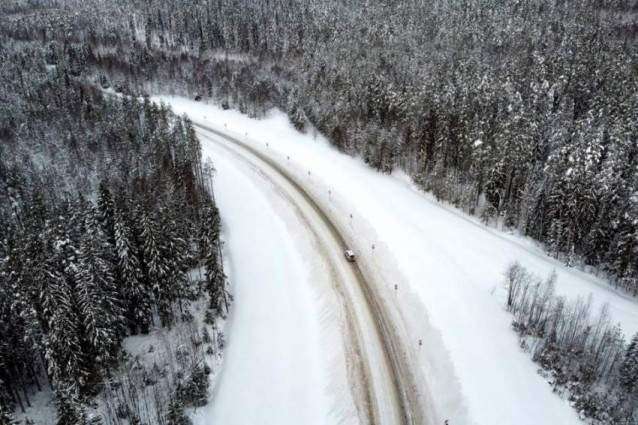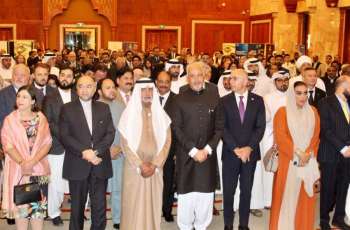MOSCOW/BELGOROD/PROKHOROVKA (Pakistan Point News / Sputnik - 17th May, 2021) , Denis Chernyshenko - A Sputnik correspondent has visited the Russian city of Belgorod, whose name translates as "White City," and the nearby settlement of Prokhorovka, which witnessed one of the greatest tank battles in history.
Belgorod is located 700 kilometers (over 430 miles) south of Moscow and only 40 kilometers from the border with Ukraine. Before the 2014 crisis, the city had close economic ties with the eastern Ukrainian city of Kharkiv.
Belgorod was founded in 1596 as a fortress, a part of the Belgorod defensive line to counter attacks from Crimean Tatars. After the fall of the Crimean Khanate in the 18th century, Belgorod lost its strategic importance and turned into an ordinary provincial town. By the beginning of the 20th century, Belgorod had become a significant railway juncture.
In 1914, Russia entered World War I, which proved disastrous for the country. On April 11, 1918, Belgorod was seized by the German Empire, but less than a month later, Soviet Russia signed the Treaty of Brest-Litovsk with Berlin, which urged the latter to transfer Belgorod to the fledgling Ukrainian state, or Hetmanate, led by Hetman Pavlo Skoropadskyi.
On December 20, 1918, Soviet troops established control over Belgorod and even proclaimed the city as an interim capital of Soviet Ukraine. However, in June 1919, the Volunteer Army led by Anton Denikin defeated the Bolsheviks and seized the city, but in October-November, the White Army suffered a devastating defeat in the Oryol-Kromy Battled, which allowed the Red Army to win the Civil War.
Belgorod also witnessed heavy fighting in World War II, having been occupied by Nazi Germany in October 1941 and liberated by the Red Army on February 9, 1943. However, a month later, the Germans conducted one of their last successful counteroffensives against the USSR and regained control over Belgorod. The city was freed for the second time on August 5, 1943, as part of the great Battle of Kursk.
August 5, 1943, was also a date of the liberation of Oryol, which was celebrated by the first war-era fireworks display in Moscow that gave both cities a name "cities of the first fireworks." The war left Belgorod absolutely devastated and the city was in fact fully rebuilt after its end.
ONE OF THE MOST BEAUTIFIED CITIES
For years, Belgorod has been included in the list of the most beautified cities of Russia and it's easy to see how: even though there are no major historic sights in the city, it is very pleasant just to walk along its streets, full of trees and nice buildings!
Especially beautiful are the surroundings of the Belgorod National Research University and the nearby Park Pobedy (Victory Park) where many people jog and pursue other activities. Personally, I have the impression that Belgorod is a city of healthy living: I have never seen so many people doing sports in Russia and so many street cafes without alcohol.
Unfortunately, the famous Diorama Museum dedicated to the Battle of Kursk was closed, but I visited the Local History Museum and the Belgorod State Art Museum. The latter left a very good impression as some interesting paintings are exhibited there.
From my point of view, the zoo is the pearl of Belgorod: it is located in the southeastern outskirts of the city and is perfectly incorporated into a natural landscape, which is rather more common for European zoos.
Belgorod is worth visiting to see how beautiful and comfortable a modern Russian city may be!
The settlement of Prokhorovka is located 56 kilometers from Belgorod and is famous for the heavy tank fighting that took place here on July 12, 1943, as part of the Battle of Kursk.
The Battle for Kursk was the last attempt of Nazi Germany to change the course of the fatal war against the Soviet Union. The Wehrmacht wanted to encircle the Soviet troops on the huge Kursk Salient by carrying out two great tank assaults: from Oryol in the north and from Belgorod in the south (Operation Citadel).
The Soviet command was aware of the German plans, prepared for the defense and opened heavy artillery fire at the Germans in the morning of the offensive's start. As a result of that, the northern offensive of the Nazis was absolutely futile: they were stopped near the town of Ponyri far from their strategic goals.
The situation in the southern flank was more dramatic as the Wehrmacht could overcome the Soviet advanced defensive lines and started to deepen into the Kursk Salient. In mid-July, the heroic efforts of the Red Army managed to prevent the German breakthrough from turning into a disaster. The fierce fighting in Prokhorovka was not a devastating defeat for Germany, but thereafter, it became clear that the Wehrmacht had no chance of winning the whole Battle for Kursk.
The Soviet interpretation of the battle at Prokhorovka holds that the German troops had some 800 tanks while the Red Army 850 vehicles. The German side is said to have lost around 400 tanks. Some Western historians argue that Germany had less than 200 tanks, which were attacked by over 650 Soviet vehicles, and the combat was in fact a victory of the Wehrmacht that lost only five tanks compared to more than 230 lost Soviet tanks.
Russia opposes such an interpretation of the event, and anyway, the fact is that the Wehrmacht lost the Battle of Kursk, with the Soviet troops having launched a large-scale counteroffensive and liberated large territories.
Today, Prokhorovka is a memorial settlement with multiple museums and monuments commemorating the battle. The museums are modern and exhibit many interesting artifacts -- they are worth visiting not only to learn more about the Battle of Kursk, but also to better understand the horrors of war suffered by the Soviet people.




